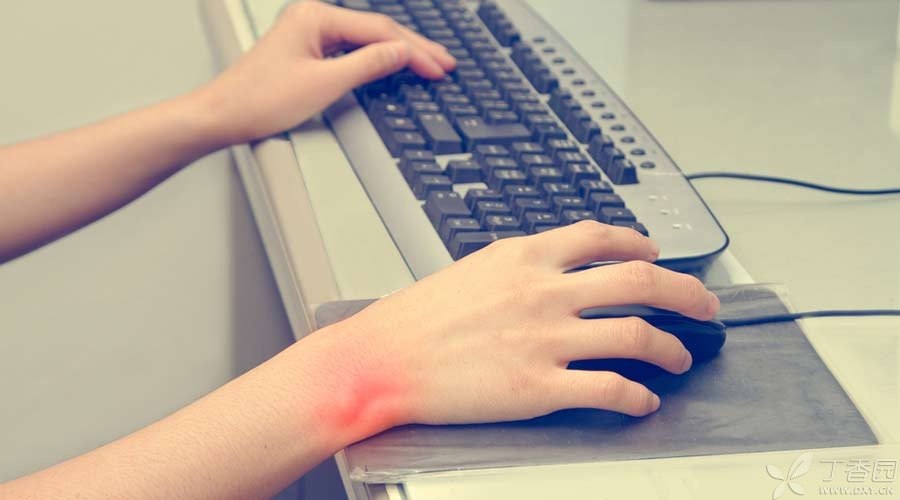
Do you often wake up in the middle of the night when you are sleeping and feel the pain in your hands like a needle? At this time, you try to shake your hand, do you find it better?
If the above situation occurs on your thumb, index finger and middle finger, you should pay attention to it, which is an omen of carpal tunnel syndrome.
Of course, all hand pain cannot be classified as carpal tunnel syndrome. Carpal tunnel syndrome is a hand neurological disease with characteristic symptoms.
How did it happen?
Our wrist has an important channel called the carpal tunnel. It is important because nerves and other important structures in the hand pass through it. When the carpal tunnel is inflamed or squeezed, The increased pressure will compress the median nerve, an important nerve that controls the movement and sensation of the hand, resulting in a series of symptoms.
In addition to the above possible nighttime symptoms, you may also feel tingling at your fingertips at ordinary times. Without treatment, the muscles of your hands will become weak and difficult to grasp over time.
If you are experiencing these pains, please be sure to take time to go to the hospital’s orthopaedic or hand surgery department to make a clear diagnosis and treat them as soon as possible.
How to Overcome Carpal Tunnel Syndrome?
To overcome carpal tunnel syndrome, there are simply three steps:
First, clear diagnosis
You may be asked to do these tests when you go to see a doctor:
-
Tinel sign: Doctors will tap your wrist to check your nerve reflex. Many patients will feel like electric shocks.
-
Appearance and physical examination: In the worst case, the doctor may find that your thumb muscles have shrunk.
-
Phalen Test: You need to keep your wrist at the position of maximum flexion, which may trigger the above symptoms.
-
Electromyography and nerve conduction examination: These nerve function examinations are helpful for the final diagnosis of carpal tunnel syndrome.
Doctors will also pay attention to your overall health. This is because other diseases, such as diabetes, rheumatoid arthritis, hyperthyroidism and other diseases, are closely related to carpal tunnel syndrome. At the same time, pregnancy and genetic factors are also related to carpal tunnel syndrome.
In general, the treatment plan will mainly focus on the symptoms of carpal tunnel syndrome. However, it is very important to treat systemic diseases at the same time. If you suffer from rheumatoid arthritis, controlling the disease will help relieve carpal tunnel syndrome.
Second, self-conditioning
If the disease is mild, we often start treatment from the first night symptoms.
It is difficult for people to control the posture of their wrists when they are asleep, so many patients have obvious symptoms at night. At this time, you can try to wear a wrist splint, which can keep the wrist straight and avoid compressing nerves due to wrist bending.
Wearing the splint during the day will help if your normal working conditions permit. It should be noted that normal working conditions, such as keyboard tapping and assembly line work, and other repetitive activities, may also affect the condition of carpal tunnel syndrome.
When necessary, you can seek the help of occupational physiotherapists. They can help you improve your working environment and relieve stress.
If the pain is obvious, try to use analgesic drugs. However, generally speaking, analgesic drugs have limited relief effect on carpal tunnel syndrome. Of course, you can also try ice compress on your wrist, but unfortunately, although ice compress has good effect on other wrist diseases, it is difficult to work on carpal tunnel syndrome.
What should I do? Make a rest plan for your wrist:
- For every 30 minutes of using the computer, let your fingers and wrists rest for 10 minutes. Often shake hands, rub wrists;
Third, medical treatment
If the disease develops to a more serious stage, so that wearing splints and changing exercise habits cannot be relieved, corticosteroids may need to be injected at this time.
Many patients can be relieved for months or even years after injection, but tissue atrophy may be caused if used for a long time. Therefore, we do not recommend long-term use of corticosteroid hormones. Generally speaking, the number of injections should not exceed two in a year.
For more serious conditions, surgical treatment is the best choice. Fortunately, carpal tunnel release surgery is very common and has a high success rate. Most patients can regain normal mobility after 6 weeks of surgery.
After surgery, patients usually need to wear wrist splints for a period of time. At the same time, occupational physiotherapists are also very helpful to the recovery of patients. They can help patients correct their bad habits at work and relieve pressure.
Responsible Editor: Jing Liu
Clove Garden is exclusively authorized and cannot be reproduced without permission.
